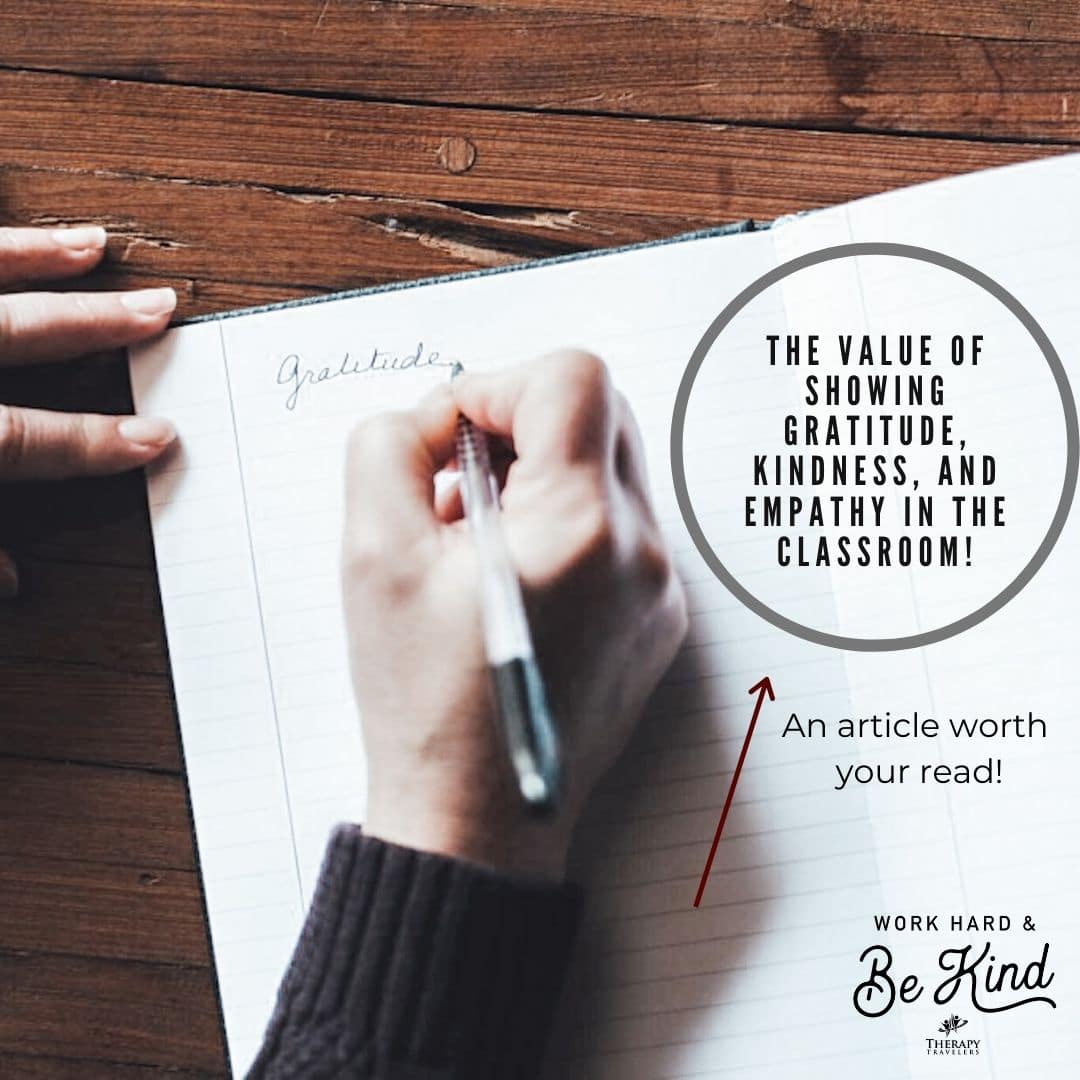
According to research, nurturing prosocial behaviors may improve academic outcomes—both classroom grades and test scores.

According to a study from the Encyclopedia on Early Childhood Development, “Prosocial behavior is linked positively to classroom grades and standardized test scores.” Using prosocial behaviors in the classroom improves learning outcomes for students. Here are three prosocial behaviors you can use today in your classroom: gratitude, kindness, and empathy.
Practicing Gratitude in the Classroom
Gratitude enhances the mood of the sender and the receiver. Also, according to a study from Harvard, feeling gratitude over time increases the overall mood of a person.
In the classroom, foster gratitude by setting aside time for students to journal weekly or daily about things they are grateful for. Consider having them use a notebook, work with a shared folder in Google Drive, or staple sheets of paper to keep their entries together. Over time, remind students to go through their journal and look at previous entries because this type of review helps deepen the effectiveness of the gratitude journal.
The records of gratitude can be public as well. Provide a designated area by taping off a wall space in your classroom or creating a bulletin board for gratitude. Students can write notes of gratitude to each other on sticky notes or index cards. Model the behavior by writing positive notes to students for specific acts and posting the praise. As students write the notes, allow them to turn the notes in to you. If a student should turn in a note that doesn’t qualify as a note of gratitude, give him or her feedback on how to improve the note. Allow students the chance to revise their writing.
Encouraging Random Acts of Kindness
Random acts of kindness increase compassion, which in turn leads to a greater sense of interconnectedness in the classroom. The prosocial behavior of kindness, according to this study, is also contagious, and when witnessed by others, it causes kindness to spread. The following are three simple ways to include random acts of kindness in your classroom:
Give authentic compliments and praise. Taking the time to point out something a student is doing well is an easy way to spread kindness. When students see modeling of authentic compliments, they can replicate specific praise with their peers.
Have students do simple acts to help the school. Students can make cards to welcome new students to the building.
They can also create a jar of joy. Give students paper, markers, and scissors, and allow them to fill a jar with positive colorful messages, motivational quotes, and stories of encouragement. Once students are finished, they should choose someone to give the jar to as a random act of kindness. Students can use the joy-filled containers for a friend in need, to cheer up patients in need at a local hospital, or to cheer up a sad classmate.
Building Empathy Through Happiness Boards
The prosocial behavior of empathy is important for creating understanding in students. Having students share vulnerabilities and dreams is a way to get them to show and learn empathy. Happiness boards are a useful tool for helping students develop empathy.
Students create visual reminders of positive memories, dreams, and aspirations. They can create a collage digitally, through an application such as Google Slides, or they can create a tangible board by cutting pictures out of magazines.
Ask students to make a list of memories or moments in which they were proud of themselves. Next, using the back of the same paper, have students make a list of dreams or goals they have for their life. Finally, prompt students to think of people they admire and write down characteristics of those individuals that they would like to gain, such as compassion, joy, or understanding.
Students can create a collage of visuals centered around their name to represent who they are and their future goals, highlighting the most important aspects of their various lists. Teachers can also participate by creating a board that can serve as a model for the students using their own lives.
Once finished, display the boards around the classroom. Allow students to do a gallery walk around the room and look at the boards. Prompt students to write down similarities and connections they see between their own board and that of their classmates. Bring the class together at the end of the activity to share some of the connections they discovered. This will help create bridges of empathy and understanding as students see the dreams, goals, and shared experiences that link them together.
As teachers, we have an opportunity to teach and model prosocial behaviors to our students. Teaching empathy, kindness, and gratitude contributes to a child’s social and academic success. Prosocial behavior fosters positive traits that benefit learners and society.



